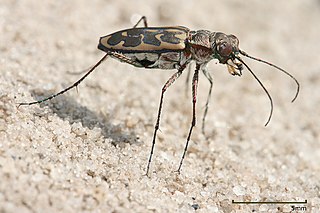
Tiger beetles are a family of beetles, Cicindelidae, known for their aggressive predatory habits and running speed. The fastest known species of tiger beetle, Rivacindela hudsoni, can run at a speed of 9 km/h, or about 125 body lengths per second. As of 2005, about 2,600 species and subspecies were known, with the richest diversity in the Oriental (Indo-Malayan) region, followed by the Neotropics. While historically treated as a subfamily of ground beetles (Carabidae) under the name Cicindelinae, several studies since 2020 indicated that they should be treated as a family, the Cicindelidae, which are a sister group to Carabidae within the Adephaga.

Papilio is a genus in the swallowtail butterfly family, Papilionidae, as well as the only representative of the tribe Papilionini. The word papilio is Latin for butterfly.

John Obadiah Westwood was an English entomologist and archaeologist also noted for his artistic talents. He published several illustrated works on insects and antiquities. He was among the first entomologists with an academic position at Oxford University. He was a natural theologian, staunchly anti-Darwinian, and sometimes adopted a quinarian viewpoint. Although he never travelled widely, he described species from around the world on the basis of specimens, especially of the larger, curious, and colourful species, obtained by naturalists and collectors in England.

Graphium is a genus of mostly tropical swallowtail butterflies commonly known as swordtails, kite swallowtails, or ladies. Native to Eurasia, Africa, and Oceania, the genus is represented by over 100 species. Their colouration is as variable as the habitats they frequent; from rainforest to savannah. Some possess tails which may be long and swordlike, while others lack any hindwing extensions. Graphium species are often sighted at mud puddles.

Flower chafers are a group of scarab beetles comprising the subfamily Cetoniinae. Many species are diurnal and visit flowers for pollen and nectar, or to browse on the petals. Some species also feed on fruit. The group is also called fruit and flower chafers, flower beetles and flower scarabs. There are around 4,000 species, many of them still undescribed.
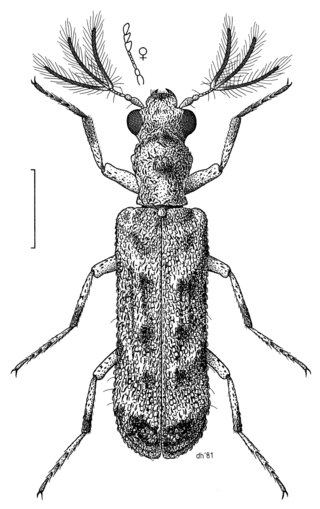
The Bostrichidae are a family of beetles with more than 700 described species. They are commonly called auger beetles, false powderpost beetles, or horned powderpost beetles. The head of most auger beetles cannot be seen from above, as it is downwardly directed and hidden by the thorax. Exceptions are the powderpost beetles, and members of the subfamily Psoinae.
The Lucanidae are a family of beetles that include the stag beetles. The family can be further subdivided in a taxonomy. The classification presented here follows Smith (2006), with the exception of the tribal classification within the Lucaninae.
Anomiopus is a genus of scarab beetles in the family Scarabaeidae. There are more than 60 described species in Anomiopus, found in Central and South America.

Demansia is a genus of venomous snakes of the family Elapidae. Members of the genus are commonly known as whip snakes or whipsnakes, as are members of several other genera.
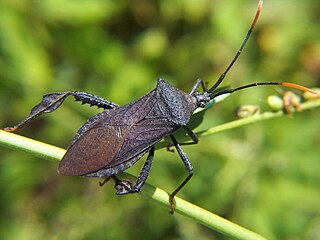
Acanthocephala, also known as spine-headed bugs, is a New World genus of true bugs in the family Coreidae. The scientific name is derived from the Greek ἄκανθα (akantha) meaning "thorn/spine" and κεφαλή (kephale) meaning "head". This name refers to the diagnostic spine on the front of the head.
Setodyschirius is a genus in the ground beetle family Carabidae. There are about 13 described species in Setodyschirius, found in Australia.
Carenum is a genus of beetles in the family Carabidae, containing the following species:

Euryscaphus is a genus in the ground beetle family Carabidae. There are about seven described species in Euryscaphus, found in Australia.
Laccopterum is a genus of beetles in the family Carabidae, found in Australia.

Copelatus irregularis is a species of diving beetle. It is part of the genus Copelatus in the subfamily Copelatinae of the family Dytiscidae. It was described by W. J. Macleay in 1871.
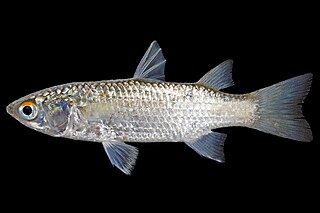
Planiliza is a genus of mullets found in coastal marine waters, estuaries and rivers in the Indo-Pacific.
Macrocephalus is a genus of ambush bugs in the family Reduviidae. There are more than 30 described species in Macrocephalus.
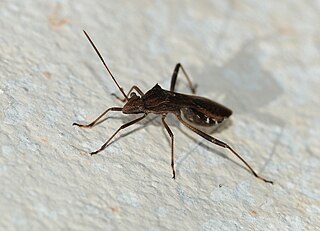
Neomegalotomus is a genus of broad-headed bugs in the family Alydidae. There are at least two described species in Neomegalotomus.
Amycterus is a genus of weevils belonging to the Amycterini tribe in the family Curculionidae, first described by Carl Johan Schönherr in 1823. The decisions for synonymy are based on work by Alonso-Zarazaga, M.A. and Lyal, C.H.C. and Elwood Zimmerman.













